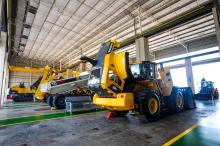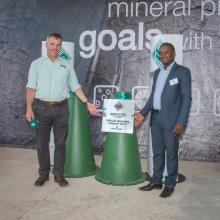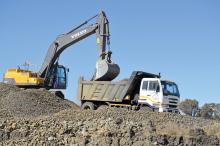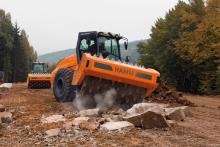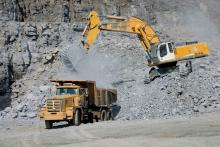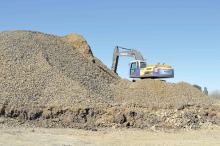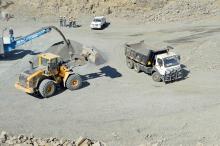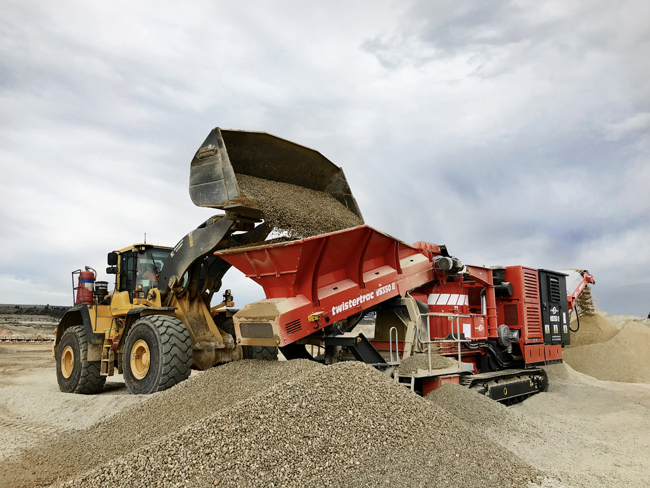
With African governments working hard to close the infrastructure gap, transport projects continue to anchor the continent’s construction efforts, representing the bulk of projects currently underway across all regions of the continent. By Munesu Shoko.
The lack of infrastructure, most importantly, modern roads and power networks, hampers Africa’s economic development endeavours. Therefore, closing the infrastructure gap is vital for Africa’s future, and governments are well aware of this reality. The New Partnership for Africa’s Development (Nepad), an economic development programme of the African Union, notes that infrastructure is Africa’s top priority. With low levels of intra-regional economic exchange and the smallest share of global trade, Africa is the least integrated continent in the world.
Not only does sub-Saharan Africa’s existing infrastructure fall short of its needs, but it is claimed to lag well behind infrastructure development in other poor regions. Available statistics show that Africa has only about 30% of the paved road per kilometre found in other low-income regions and about an eighth of the electricity-generation capacity per person.
The Development Bank of Southern Africa says that poor road and rail facilities add almost 30-40% to the cost of goods traded among African countries, while Nepad notes that infrastructure inefficiencies are costing Africa billions of US dollars annually and are stunting growth. Bridging this gap can only be achieved through regional and continental cooperation, especially when it comes to transport networks.
African governments seem to be responding to the call with infrastructure projects on the go being testimony to the urgent attention on transport development programmes. In its Africa Construction Trends (ACT) Report 2018, Deloitte quotes a Chinese proverb, “if you want to prosper, first build roads”, and it certainly holds true for Africa as the transport sector continues to lead the way with almost 40% of the 482 projects tracked by the report being either roads, bridges or rail.
The 2018 edition of Deloitte’s ACT Report recorded 482 projects valued at US$50 million or above, that had broken ground by 1 June 2018. In total, the projects amount to US$471 billion. This is a significant increase on the 286 projects with a collective value of $324 billion recorded in 2017, translating into an increase of 59% in terms of the number of projects, and a 53.3% jump in the value of projects.
With a total of 186 projects, the transport sector accounts for the majority of projects currently underway across the continent, representing 38% of the total, with a collective value of US$107 billion. Of the 186 transport projects recorded in the ACT report of 2018, 72.5% (135) fall within road and bridge construction. This is a true indicator of the concerted efforts by African governments to enhance trade and growth-supporting infrastructure across the continent.
North Africa saw the largest change in the number of projects, recording 69 in total, representing a whopping 172.5% increase from the 40 projects recorded in 2017. Simultaneously, the total value of projects in the region grew 92.3% from $77.1 billion in 2017 to $148.3 billion in 2018.
Notably, the transport sector accounts for 30.3% of North Africa’s projects and a similar share (31.3%) in project value terms, buoyed by several transport corridors underway. A project of note is the $11.2 billion Algerian East-West Highway – the six-lane toll highway is being built between Algeria’s borders with Morocco and Tunisia, and is deemed an important road project for infrastructure interconnectivity in the region.
East Africa – which comprises Kenya, Tanzania, Uganda, Seychelles, Somalia, Rwanda, Eritrea, Ethiopia, Djibouti, Comoros and Burundi – recorded a total of 139 projects at a combined value of US$87.1 billion. Compared with the 71 projects recorded in 2017, the 139 projects in 2018 represent a substantial 96% increase. Total US dollar project value also rose 167% from $32.6 billion in 2017 to $87.1 billion in 2018. The region accounts for 28.8% of projects currently underway on the continent and 18.5% value-wise.
Again, the transport sector continues to lead the project frontier in East Africa, accounting for 44.3% of the total projects and 26.6% in terms of US dollar value. A focus on this sector reflects that governments have grasped the fact that a well-developed transport network is integral for the East African Community’s Development Strategy.
Elsewhere, the Central Africa region is currently home to 26 projects worth $26.9 billion. The number of projects as well as the US dollar value represent an increase of 30% and 174.5% respectively compared with 2017. The mining sector leads the sectoral composition of projects with 38.5% of the 26 projects, followed by the transport sector, which accounts for 19.2% of the projects.
West Africa was home to 105 projects with a total value of $82.8 billion in 2018, representing an increase of 32.9%, but a decrease of 15.8% in US dollar value compared with 2017. The transport sector continues to lead the sectoral breakdown with the largest number of projects in the region (52), representing 49.5% of the total projects underway in the region. Projects in the transport sector have a combined value of $16.2 billion, representing 19.5% of the total value.
Southern Africa has a total of 103 projects, with a total value of $125.4 billion, translating into 21.4% of all projects in Africa and 26.6% in terms of value. The total number of projects in 2018 saw an increase of 10.8% from the previous year, while the value jumped 39.8% from $89.7 billion in 2017 to $125.4 billion in 2018.
The transport sector accounts for 32% of projects, followed by real estate activity at 25.2%. The mining sector also recorded the largest growth in the number of projects, growing 125% with five new projects. Notably, Botswana is home to four of the new mining projects. South Africa continues to account for the largest share of infrastructure development activity in the region with 35.9% of projects, followed by Angola with 14.6% and Mozambique with 13.6% of projects.
The general sentiment is that construction has been slow. Commenting on the state of affairs in South Africa and southern Africa at large, Francois Marais, sales & marketing director at
“We saw all of our large, traditional construction clients under financial constraints for a number of reasons, but mainly as a result of bad debt and a lack of new large infrastructure projects. Many pending projects were placed on hold and several completed infrastructure works from previous periods were left unpaid by project owners. Our construction clients preferred to retain old equipment and opted to repair as opposed to replacing, due to the subdued cash flow situation in their businesses,” says Marais.
With construction under pressure in 2018, what was the state of affairs in the aggregates industry? “Aggregates producers retained similar levels of demand in 2018 as they did in 2017, but also remained under pressure, especially in South Africa. Many contractors and aggregate producers looked to branch out across the borders into neighbouring countries to secure contracts and stimulate growth within their businesses. As was the case with construction companies, many aggregate producers looked to retain older equipment and repair as opposed to replacing equipment for newer models,” explains Marais.
Despite the challenging market conditions, the southern African capital equipment market surprisingly defied the odds to even record some slight growth figures. For example, if commercial vehicle sales are anything to go by, 2018 was a year of slight growth in the face of lethargic economic growth and high interest rates which burdened industries that rely heavily on debt financing.
Raimo Lehtiö, MD of Scania South Africa, says from a total volumes point of view, 2018 was actually a little bit better than expected for the trucking sector. The market was expected to slightly dip compared with 2017, but surprisingly recorded growth in the 7% region. “The reason might be the fact that in 2017 several truck owners de-fleeted to reduce the sizes of their fleets in response to the tough business conditions at the time. Then in 2018 there was an unexpected slight market resurgence, which forced them to purchase new trucks to fulfil their new contracts,” says Lehtiö.
Elsewhere, the Construction and Mining Equipment Suppliers’ Association (CONMESA) also recorded a continuous growth cycle in consecutive quarters. The growth trajectory started way back in 2017 when construction and mining equipment sales moved strongly upwards to break a three-year downward cycle that had gripped the industry since the second quarter of 2014.
Figures released by CONMESA at the start of 2018 showed that 5,614 new units had been sold during 2017, marking a healthy 18.3% increase over the previous year’s results. Until then, the decline in sales had seen the number of units sold dwindle from 7,250 units in 2013 to a low of 4,747 in 2016. “The cycle continued well into the first quarter of 2018, with sales of new equipment reaching levels last seen in the first quarter of 2015. A total of 1,542 units were sold during the period, an improvement of nearly 100 machines during the same period in 2017. It also extended the trend that had seen equipment sales inch upwards since the beginning of 2017,” explains Lawrence Peters, CONMESA chairman.
Marais says although Pilot Crushtec International’s equipment sales grew during the course of 2018, the bulk of the growth was contributed by the resilience in the mining sector, as opposed to construction and aggregate industries. “We saw mining as a buoyant sector in South Africa and cross-border markets, sustained by strong commodity prices and an increased demand for raw materials internationally,” says Marais. “Unfortunately, the lack of major infrastructure projects and slowing international investment into South Africa has meant that construction companies and aggregate producers have experienced a stressful 2018 with limited ability to purchase new equipment.”
Looking ahead, what are the prospects for 2019? In the truck industry, Lehtiö believes that 2019 will stabilise, especially considering that it’s an election year in South Africa. Generally, there is a wait-and-see approach whenever an election is looming as the uncertainty creates a lot of risk for any large capital investments. However, it is also common practice for incumbent governments to splash a bit of cash during the run-up to elections, especially on infrastructure development projects.
“With the local elections scheduled for 2019, there is an optimistic view that the third or fourth quarter of 2019 may see some positive stabilising of the currency and an improved enthusiasm to initiate overdue infrastructure projects. The drive to develop will hopefully have a positive impact on the industry and we hope that this in turn, will positively affect aggregate producers,” concludes Marais.

